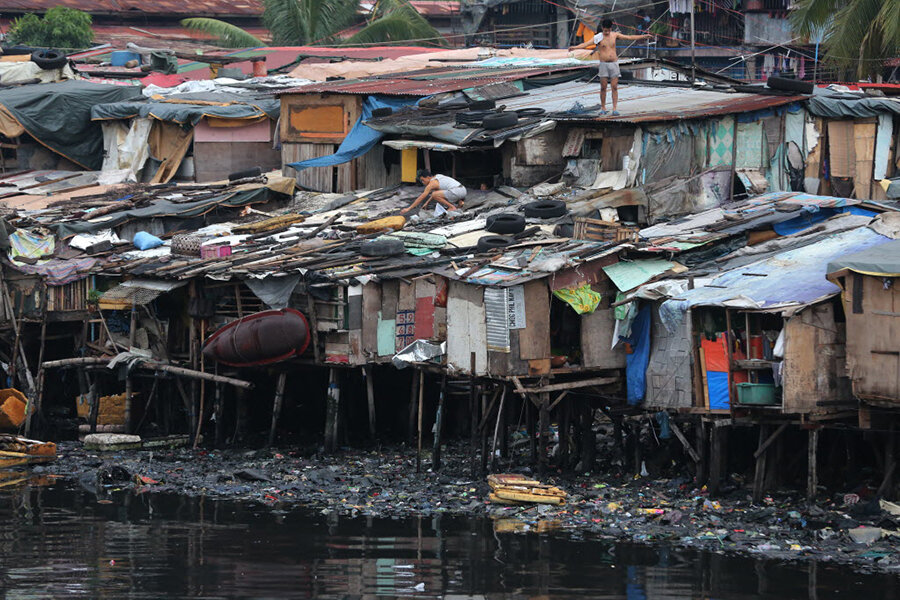Thousands flee as typhoon slams into Philippines, storm nears Manila
Loading...
| MANILA, Philippines
A typhoon slammed into the northeastern Philippines late Tuesday night, flooding low-lying villages, ripping off roofs and knocking down trees and electric posts in a disaster-prone region where tens of thousands of people fled to safety ahead of the deluge.
The storm is the strongest typhoon to hit the country this year.
Damage from Typhoon Rammasun could not be assessed until daybreak, especially in areas that lost power while being pummeled by the wind and rain. No casualties were immediately reported, though three fishermen were missing in Catanduanes province.
The fast-moving typhoon made landfall in nearby Albay province while packing sustained winds of 130 kilometers (80 miles) per hour and gusts of up to 160 kph (99 mph). Heading northwest, the storm is forecast to hit Manila, the flood-prone capital of 12 million people, on Wednesday morning. It is expected to cross the main Luzon island at 19 kph (12 mph), with the eye of the storm likely to be over the capital before noon (0400 GMT) on Wednesday.
Polangui Mayor Cherilie Mella Sampal estimated more than half of the 15,000 to 20,000 houses in her rice-growing town may have been damaged or blown away by the fierce wind and rain that came around nightfall.
As the typhoon raged for about three hours, Sampal said she saw the wind topple electric posts and lift roofs off houses. Many fallen trees also blocked roads in her town of 80,000 people, about 10,000 of whom were moved to safety, she said.
While Albay is used to calamities inflicted by storms and Mayon, the country's most active volcano, Sampal said her townfolk were apprehensive after witnessing the massive devastation and deaths wrought by Typhoon Haiyan in the central Philippines last November.
"We're used to and prepared for calamities," Sampal told The Associated Press by cellphone. "But when people heard that the eye of the typhoon will hit the province, they feared we may end up like the victims of Yolanda," she said, referring to the local name of Haiyan.
About 300,000 people moved to safer ground from their homes in Albay and five nearby provinces threatened by flooding, landslides and storm surges, many of them haunted by memories of last year's disaster, officials said. Haiyan's strong winds and tsunami-like storm surges flattened towns, leaving at least 6,300 people dead and more than 1,000 missing.
"The wind is very strong, we are really being battered," Joey Salceda, governor of coconut- and rice-growing Albay province said in a television interview, adding he expected high economic losses rather than casualties.
Albay, about 340 kilometers (212 miles) southeast of Manila, the capital, has had its share of major disasters. Mudslides from Mayon volcano buried villages during a 2006 typhoon and left about 1,600 people dead and missing.
"I got scared because our house was being pounded by strong wind and rain. We went and got drenched in the rain," Lucille Navarro, a 35-year-old mother of two, said by cellphone from a crowded evacuation shelter in Albay's Daraga town, where she brought her son and daughter.
Alexander Pama, executive director of the National Disaster Risk Reduction Management Council, said many villagers, mindful of past disasters, cooperated and moved rapidly when told to evacuate. But he added that he was concerned the typhoon would roar through some densely populated regions in the dark, many without power and communications.
About 40 provinces, cities and municipalities on Luzon island, including the capital, suspended all schools and colleges. Thirty domestic and international flights were canceled, said Alexander Pama, head of the national disaster agency.
Albay and Camarines Sur provinces declared a state of calamity, officials said, which will allow the release of funds for relief efforts.
President Benigno Aquino said the armed forces were on full alert.
"I reiterate, the objective has to be: minimize the casualties and the hardship of our people," Aquino said.
The storm will pass north of Eastern Samar and Leyte, the provinces worst hit by Haiyan, where some residents are still living in tents due to slow recovery efforts. Those areas may see heavy rain and strong winds.
Governor Miguel Villafuerte of Camarines Sur said he had asked the army to help with mandatory evacuations. But despite all the warnings, many residents were reluctant to leave home.
"We are prepared for the worst," said 67-year-old Rosemarie Poblete of Tobaco City in Albay, whose family of four lives near a river swollen by heavy rain early on Tuesday.
"We bought extra food and candles and are ready for any emergency," she told Reuters.
Rammasun, the Thai term for god of thunder, was forecast to blow across rice-growing northern provinces before entering the sea and heading toward Vietnam or southern China on Thursday.







